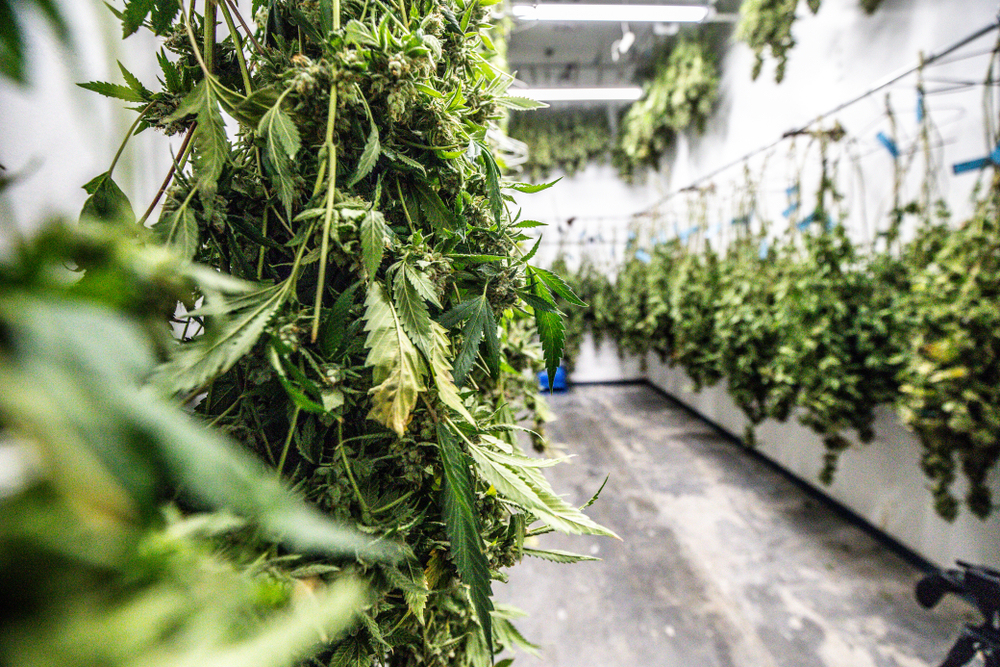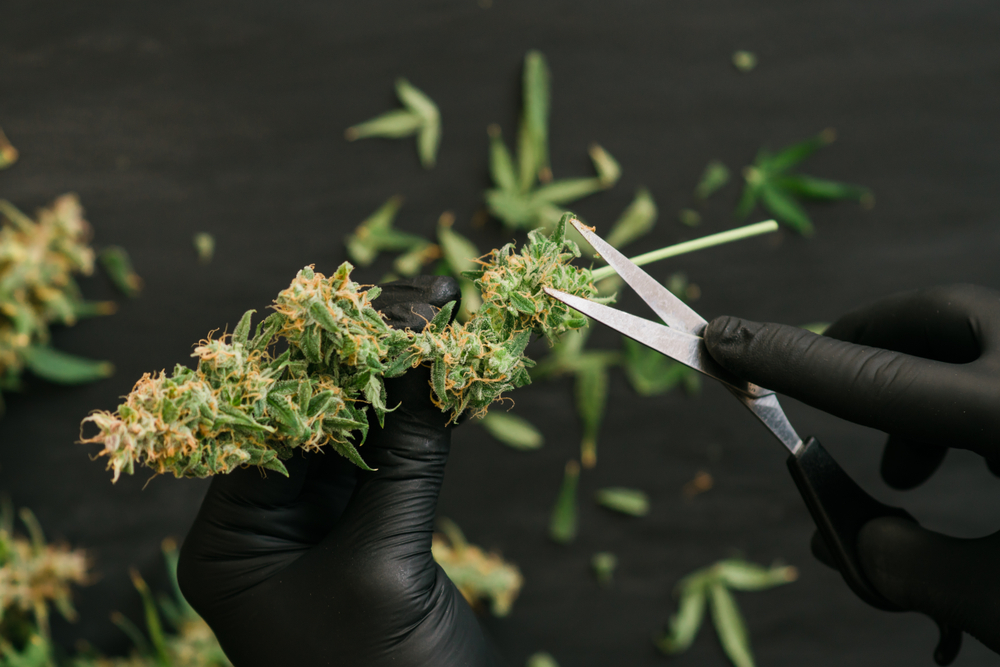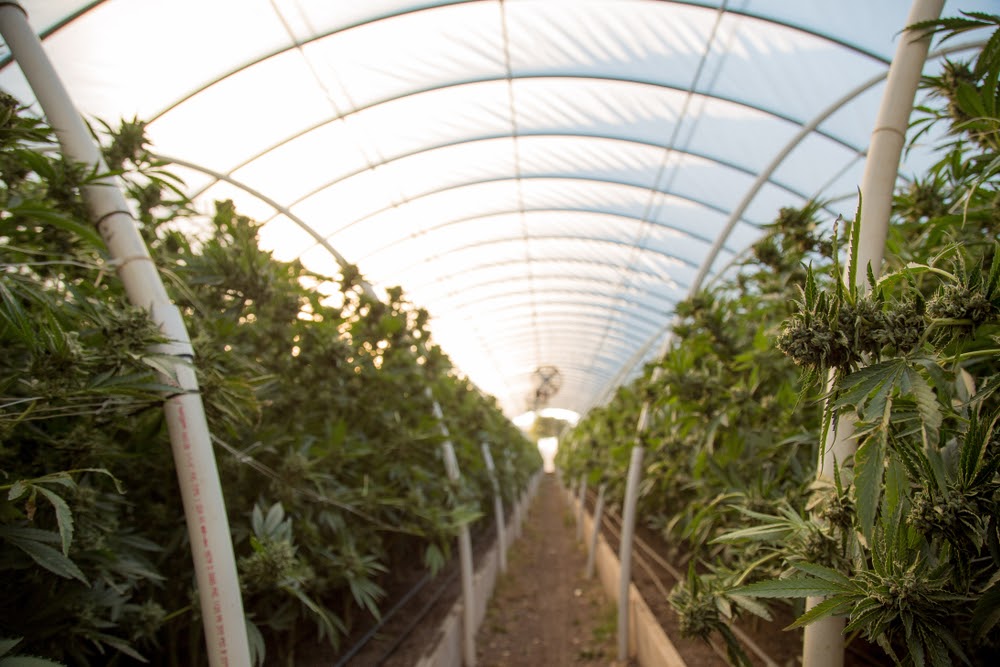When to harvest weed?
Cannabis’ major psychoactive chemicals, like THC and CBD, along with various other terpenes, fluctuate throughout the growing and flowering stages. The ultimate goal of harvesting is to do so during stages where these chemicals exist at their peak, otherwise, you’re left with mediocre grade buds.
Just imagine when your timing game for harvesting is on point, you have cannabis with the ideal chemical composition, which further leaves you with the higher likelihood of an experience you want. If you’re using cannabis medicinally, having an experience that meets your needs can’t be understated.
Before getting down into the nitty-gritty, check out these general pointers for harvesting cannabis optimally:
- It’s recommended you remove the large leaves (fan leaves) 1-2 days before harvest
- Ensure your plants are also in complete darkness 1-2 days before harvest
- Lastly, don’t water your plants 1-2 days before harvest as well
When to Harvest Weed for High-Grade Buds

Learning when to harvest weed is both an art and a science. Artfully, you can tell when the time is right through sheer observation, while scientifically, there are tools available that allow you to measure your plants chemically.
Unfortunately, such tools are generally out of reach for DIY home cannabis growers, but that’s likely to change soon. Given the context, let’s focus on using our five senses to determine the ideal time to harvest cannabis. For this practical observation approach, you’ll need to assess your plants based on four factors: Smell, stigma color, trichome color and firmness.
Smell
Cannabis is well renowned for its trademark aromas, but did you know that its smell arises from its terpene profile? Given that major cannabinoids -like CBD and THC- are scentless, you need to perform a sniff test for your plant’s terpenes to determine the ideal time. The formula here is simple– the more intense smell your plants have, the more likely its terpene content is at its peak, and thus, the more likely your plants are ready to harvest.
Stigma Color
Here’s a little cannabis plant anatomy 101: stigmas are the reproductive components of cannabis flowers. Although they play a minimal role when it comes to taste and potency, they’re important indicators to determine when to harvest weed at the ideal time. The key here is the stigma’s color–when flowering they’re white, but during the plant’s later maturation stages they transition into red, brown or orange. When your plant’s stigma is primarily these secondary colours, say 75% of them, it’s likely time for harvest.
Trichome Color
Where stigma plays a major role in cannabis plant reproduction, trichomes play a just as important role in producing cannabinoids and terpenes. You might know trichomes as the sticky, icky resin on your plants that are generally a clear color. However, when trichomes clear color turns into cloud white or amber, then it’s likely harvest time–such a change indicates that THC is converting to CBN or cannabinol, meaning peak levels of THC are taking place. Who needs tools, right?
Firmness
Take a look at your cannabis plants–are they flowering? How does the arrangement of the buds, stems and leaves look? If they’re condensed and relatively firm to the touch, then it’s an indicator that harvesting time is near. Firmness is also known as “inflorescence” in plant lingo, and to determine whether its taking place, squeeze the buds lightly and you should feel a firm resistance.
How to Trim Cannabis

Now that you’ve finished harvesting weed, the next stages of having your own homegrown strains are the trimming process. Adequate trimming ensures that your plant’s trichomes (kief) are saved and that you’re not diluting your consumption of cannabis with the excess plant material that serves no psychoactive purpose.
The trichomes are where the majority of the plant’s kief, terpenes and psychoactive-inducing effects are so it’s important that you take care to the trichomes are well-preserved. Harvest time for cannabis also means knowing how to trim cannabis, and it’s time to dive into a quick blurb on trimming.
This deserves an entirely new article, which you can find here, as for now, here are a few general pointers:
- There are two types of trimming: wet trimming and dry trimming
- When trimming, make sure your room is roughly 21 degrees celsius
- When trimming, wear gloves so that you’re hands are free of sticky, hard-to-remove trichomes
- Lastly, place a bucket or a tarp underneath while trimming as this ensures you collect the fallen trichomes
Harvest weed time won’t mean much if you’re losing most of your kief. When trimming, be ready to get your hands a bit dirty. To harvest cannabis means having the kief collect on your fingers as you trim. You can use a knife to scrape off all of this harvest time kief as you progress and make your own hash or let it fall to the floor of your tarp.
Trimming cannabis is an essential step to harvest the plant, and taking a few minutes during every harvest time to ensure you have properly manicured buds with the trichomes well preserved isn’t as difficult as you think. To begin, you’ll want to start with a decently sized bud.
Take the bud in your hands and use scissors to snip away the most of the excess and leaves while preserving the trichomes. Leave the stem intact as this should be the only part exposed from the bud and work up from there.
Continue snipping away at the plant’s excess while taking care to not snip away too much of the trichomes. In the end, an ovular shape is the most ideal. You can also trim it to your liking since it’s your own cannabis and there are multiple schools of thought surrounding the topic but the most popular trim is spherical in shape so if you don’t want to rock the boat too much.
When to Harvest Weed – Final Thoughts
Knowing when to harvest weed is both an art and a science. If you don’t have the right tools to measure your plant’s chemical composition, you can easily determine the right time to harvest by relying on your five senses, along with the four variables of trichome color, stigma color, smell and firmness to come to an informed decision.
However, your decision should be based on your goals for the experience you want and the strain type, so adjust the variables accordingly. You may want to place a heavier weighting on one variable over the other.
Irrespective of how you decide to use the four variables, make sure you track and monitor them, otherwise, you’re likely left with mediocre results.
Good luck!


 No products in the cart.
No products in the cart.